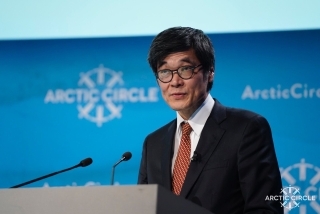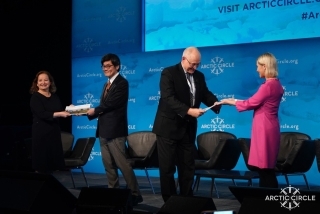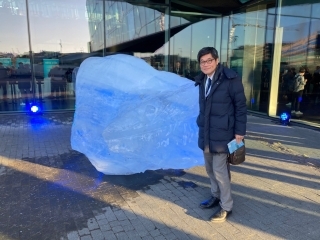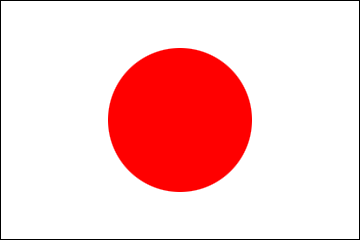From Ambassador (Arctic Circle)
2021/10/20



I attended the Arctic Circle Assembly 2021 at Harpa Concert Hall and Conference Centre a few days ago.
Even though the Covid-19 situation has gotten much better, holding an international conference with over 1400 participants under circumstances where large-scale face-to-face international conferences have been canceled or postponed was very unusual.
However, there were several times that I was reminded that the pandemic was not over; for example, participants needed to provide a negative result from a COVID-19 test, taken no longer than 48 hours in advance. I took a test right before my participation on Day 1, but had to take another test before Day 3 started.
When entering Iceland from abroad, it is necessary for those without vaccine certificates to undergo two tests and quarantine for five days in between. Because of this regulation, many of those planning to attend from Russia couldn’t join the assembly. I am afraid their presence remained quite limited, in spite of their current chairmanship in the Arctic Council.
Similar cases applied to China, too. Because of its quarantine measure when re-entering China, participants from China were limited to some Embassy officers, researchers living abroad and students.
Japanese participants had the same problem with restrictions on re-entry, too. Three people from the Sasakawa Peace Foundation, one person from the Ministry of Education, Culture, Sports, Science and Technology, one person from the National Institute of Polar Research and one person from Hokkaido University; a total of six people travelled all the way from Japan, but they had to quarantine for 14 days, or 10 days in some cases, upon their return to Japan.
Under these circumstances, it is undeniable that the number of participants from each country was not well balanced. There were especially many participants from the United States, the United Kingdom, as well as Greenland and the Faroe Islands.
At the opening session, speeches were given by the Greenlandic Minister for Housing Infrastructure, Minerals and Gender Equality, the Prime Minister of the Faroe Islands as well as the First Minister of Scotland, who will be hosting COP26 later this month. The Danish Foreign Minister – who accompanied Crown Prince Frederik of Denmark on his official visit to Iceland earlier that week – also gave a speech, but he left relatively small impression compared to the Greenlandic Minister, in my opinion.
An immense piece of ice was brought from Greenland and installed at the Harpa’s entrance! Greenland also hosted a reception with live performance by Greenlandic musicians, and offered a taste of Greenlandic cuisine!
Greenland is an autonomous country within the Kingdom of Denmark. Even though Denmark is a member of Arctic Council, since it is not located in the arctic region, the presence and opinion of Greenland and the Faroe Islands carries considerable weight.
Iceland is geographically very close to these two West Nordic countries. They are all island nations on the periphery from the European mainland and share many things, such as the importance of the fishing industry for their economies. Clearly, human exchanges between these countries is so active that I could feel that Iceland welcomed their prominence in this assembly.
For Japan, as the host of ASM3 in Tokyo last May, it gave us an important opportunity for a formal hand over for the next Arctic Science Ministerial Meeting (ASM4). On behalf of the Japanese government I explained the significance of ASM3 and reported its results. On stage, I physically, and symbolically, handed over the report from ASM3 to France which will be the host for ASM4.
I was a little bit nervous giving a speech to such a big audience, but looking back it was nothing but a great experience.
Even though the Covid-19 situation has gotten much better, holding an international conference with over 1400 participants under circumstances where large-scale face-to-face international conferences have been canceled or postponed was very unusual.
However, there were several times that I was reminded that the pandemic was not over; for example, participants needed to provide a negative result from a COVID-19 test, taken no longer than 48 hours in advance. I took a test right before my participation on Day 1, but had to take another test before Day 3 started.
When entering Iceland from abroad, it is necessary for those without vaccine certificates to undergo two tests and quarantine for five days in between. Because of this regulation, many of those planning to attend from Russia couldn’t join the assembly. I am afraid their presence remained quite limited, in spite of their current chairmanship in the Arctic Council.
Similar cases applied to China, too. Because of its quarantine measure when re-entering China, participants from China were limited to some Embassy officers, researchers living abroad and students.
Japanese participants had the same problem with restrictions on re-entry, too. Three people from the Sasakawa Peace Foundation, one person from the Ministry of Education, Culture, Sports, Science and Technology, one person from the National Institute of Polar Research and one person from Hokkaido University; a total of six people travelled all the way from Japan, but they had to quarantine for 14 days, or 10 days in some cases, upon their return to Japan.
Under these circumstances, it is undeniable that the number of participants from each country was not well balanced. There were especially many participants from the United States, the United Kingdom, as well as Greenland and the Faroe Islands.
At the opening session, speeches were given by the Greenlandic Minister for Housing Infrastructure, Minerals and Gender Equality, the Prime Minister of the Faroe Islands as well as the First Minister of Scotland, who will be hosting COP26 later this month. The Danish Foreign Minister – who accompanied Crown Prince Frederik of Denmark on his official visit to Iceland earlier that week – also gave a speech, but he left relatively small impression compared to the Greenlandic Minister, in my opinion.
An immense piece of ice was brought from Greenland and installed at the Harpa’s entrance! Greenland also hosted a reception with live performance by Greenlandic musicians, and offered a taste of Greenlandic cuisine!
Greenland is an autonomous country within the Kingdom of Denmark. Even though Denmark is a member of Arctic Council, since it is not located in the arctic region, the presence and opinion of Greenland and the Faroe Islands carries considerable weight.
Iceland is geographically very close to these two West Nordic countries. They are all island nations on the periphery from the European mainland and share many things, such as the importance of the fishing industry for their economies. Clearly, human exchanges between these countries is so active that I could feel that Iceland welcomed their prominence in this assembly.
For Japan, as the host of ASM3 in Tokyo last May, it gave us an important opportunity for a formal hand over for the next Arctic Science Ministerial Meeting (ASM4). On behalf of the Japanese government I explained the significance of ASM3 and reported its results. On stage, I physically, and symbolically, handed over the report from ASM3 to France which will be the host for ASM4.
I was a little bit nervous giving a speech to such a big audience, but looking back it was nothing but a great experience.
